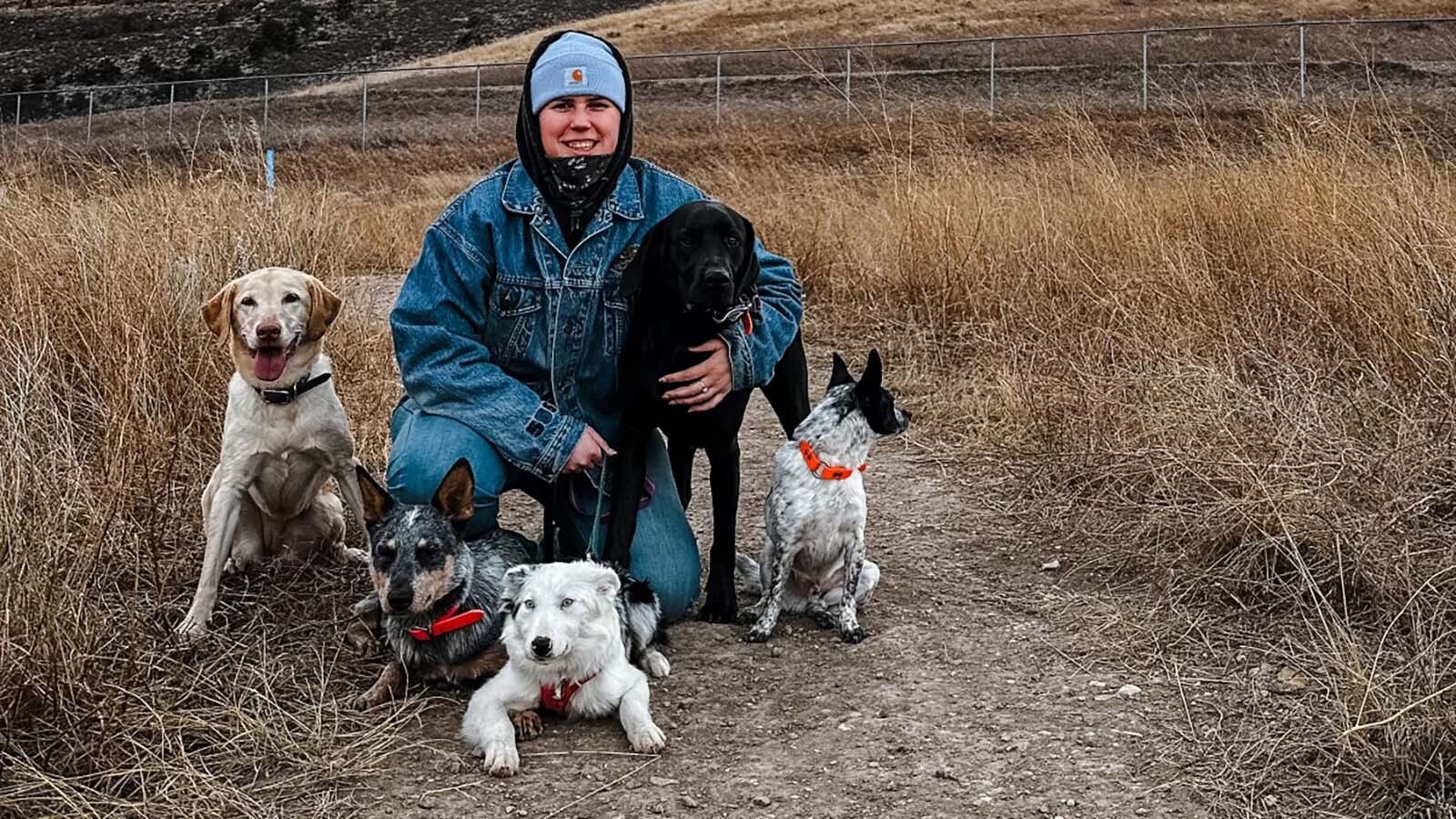The simmering war between the cattlemen and sheepmen as the 20th century dawned cranked up considerably in the first decade.
While the Spring Creek Raid of 1909 is the most infamous of the brutal and bloody skirmishes between Wyoming’s sheep and cattle ranchers, it was in 1904 when the sheep wars really began to boil over.
In early February 1904, 400 sheep being kept along the Badwater Creek in central Wyoming by Lucy Morrison Moore, nicknamed the “Sheep Queen,” were stolen. Her son Lincoln Morrison followed the tracks and found them abandoned by the thief during a winter storm.
In the spring of that year, a group of raiders showed up at the John Storrie sheep camp on Hat Creek in Converse County and clubbed 450 sheep to death and burned the sheep wagons.
“A man who was arrested by the South Dakota authorities on the charge of cattle stealing, is said to have made a full confession, giving all of the details of the crime and also the names of those who were implicated with him in the raid,” the Cheyenne Daily Leader reported Sept. 29, 1904. “It is understood that four or five raiders have left the country since the outrage was committed but that the remainder are still in the vicinity and some sensational arrests may be made shortly.”
Tie Siding Raid
In the Laramie region on April 15, 1904, 12-15 masked raiders showed up close to midnight in the Stevens and Maxwell sheep camp near Tie Siding. A sleeping Mexican worker was pulled from his wagon, his bedding tossed out and then firewood placed in the wagon and set on fire.
“The raiders taking the Mexican who was very much frightened with them, then proceeded to (the other section of the) camp about a half-mile distant,” The Laramie Weekly Boomerang reported April 28, 1904. “The night herder of the sheep, which was a band of 3,000 ewes, heard the voices of the party and running to the second sheep wagon gave the alarm to the foreman and herder who were asleep there.”
The three sheepmen tried to head for some cover, but the raiders fired shots over the top of their heads and ordered them to throw up their hands.
Foreman Cyrus Engberson asked them what their purpose was. The raiders replied they were going to kill as many sheep as possible and they would kill the sheep herders as well if they made trouble or tried to escape. The three sheepmen were tied with rope to a fence.
Firewood was tossed into the second wagon and set on fire. The men started clubbing the ewes to death. When they were done about 225 were dead.
After the men left, the Mexican, who was not tied up because the raiders didn’t perceive him to be a threat, untied the others and Engberson walked seven miles to Tie Siding, caught a train to Laramie, and brought news of the attack.
“The leaders of the mob told Engberson they would have killed all the sheep in the bunch if the strength of the men had not failed, and would kill him and his men if they made any outcry or tried to give the alarm,” the Cheyenne Daily Leader reported on April 27, 1904. The foreman “recognized a number of the men by their voices, clothing and forms, and prosecution will follow.”
The newspaper reported that the raid caused “great excitement” among the sheepmen in Albany County and the southeastern part of the state because “this is the first raid for several years in this vicinity.”
Prosecution Sought
Sheep owner Dr. H.L. Stevens, who advertised himself as Albany County’s oldest medical practitioner, went out to his sheep camp April 28, 1904, to investigate in the aftermath of the raid. He characterized damage as extensive. All that was left of the wagons was the iron framing and several sheep were wandering around in misery.
“The sights the doctor saw at the camp have strengthened his determination to push the prosecution of the culprits,” the Laramie Boomerang reported on April 29, 1904. “No further attempt has been made to molest the herds.”
Albany County Sheriff Cook and Deputy Alex McKay both rode out to Tie Siding on April 29, 1904, and arrested Wesley Johnson, William Keys and his son, Harry. Frank Carroll, a rancher, also turned himself into the Albany County Sheriff as one of the members of the raid.
Bond for all was set at $500.
The Laramie paper reported that attempts to get Tie Siding residents to discuss the incident went nowhere.
“But one ranchman made the statement that the sheep of Maxwell and Stevens had caused much annoyance to the ranchmen of the vicinity by constantly breaking through into enclosures and eating off the feed,” the Boomerang reported on April 30, 1904.
The county attorney who visited the ranch reported that there were indications that the sheep had breached their boundaries in a few places “but to no great extent.”
The Boomerang reported that herd foreman Engberson had received a warning to leave the country with the sheep, but he had not shared the threat with the sheep owners.
The Verdict
On May 30, 1904, the Wyoming Tribune reported that Judge David Craig of Rawlins would hear the case because Judge Charles Carpenter of Laramie was charged with being “biased” and “prejudiced” by the defendants.
The next week on June 3, 1904, the jury listened to arguments and testimony and declared all four charged in the raid “not guilty.”
“In view of the fact that all of the men arrested have been acquitted and a great difficulty has been experienced in getting evidence, particularly among the ranchmen of that section,” the Tribune reported. “It is not expected that there will any other arrests at present.”
It was also in 1904 when Moore nearly suffered the loss of her son, Lincoln Morrison, when he was shot at their camp on Kirby Creek on May 28 of that year.
The Natrona County Tribune reported Morrison was at the family’s sheep camp, saw the sheep were frightened and fired his gun assuming the possibility of wolves.
“He was then fired on by someone not more than twenty yards distant, who immediately made their escape, and as yet no clue has been obtained as to the identity of the guilty party,” the newspaper reported. The bullet hit the young man in his abdomen. Moore worked tirelessly to save his life.
Moore also took out an ad in several newspapers and offered $2,500 reward for the gunman’s arrest and conviction. The reward would be worth more than $88,000 in 2024.
“The coward who did the shooting dressed his feet in gunny sacks,” Moore wrote in a quarter-page ad published in the Wyoming Semi-Weekly Tribune on June 7, 1904. The ad also promised that the Luther C. Morrison estate, her first husband’s, would pay $1,000 for the dead body of the party who did the shooting.
Fall Attacks
The activity in north-central Wyoming did not stop as the fall arrived. Near the Wyoming-Montana border, a raid on George Crosby’s sheep camp resulted in 500 sheep being sent over a cliff into a gorge.
“It is reported that Crosby was in the habit of grazing his sheep in the country just south of the Pryor Mountains in Montana,” the Wyoming Tribune reported on Sept. 10, 1904, with a dateline of Cody. “The attack was made by cattlemen of that section who rode over into Wyoming and raided the Crosby camp.”
And on Sept. 14, 1904, Moore’s sheep empire was again the target of harassment near Basin, Wyoming. Someone threw some dynamite into a sheep wagon and blew it up. No one was injured. Big Horn County Sheriff John J. Fenton rode out with “warrants in blank” to try and find those responsible.
The sheriff returned in a few days without any suspects.
Recovery
The 1904 incidents against the sheepmen would continue to build during the decade. But for young Lincoln Morrison who began the year chasing his stolen flock and then suffered the bullet wound in his abdomen, the year took a more positive turn.
On Aug. 20, 1904, the Big Horn County News reported his marriage.
“Lincoln J. Morrison, son of Mrs. L. L. Moore, the young man who was wounded by unknown assassins at this sheep camp … two months ago, was married in Casper Wednesday to Miss Kyle of Lincoln, Nebraska,” the newspaper reported. “The young couple will make their home in Natrona County.”
Dale Killingbeck can be reached at dale@cowboystatedaily.com.











